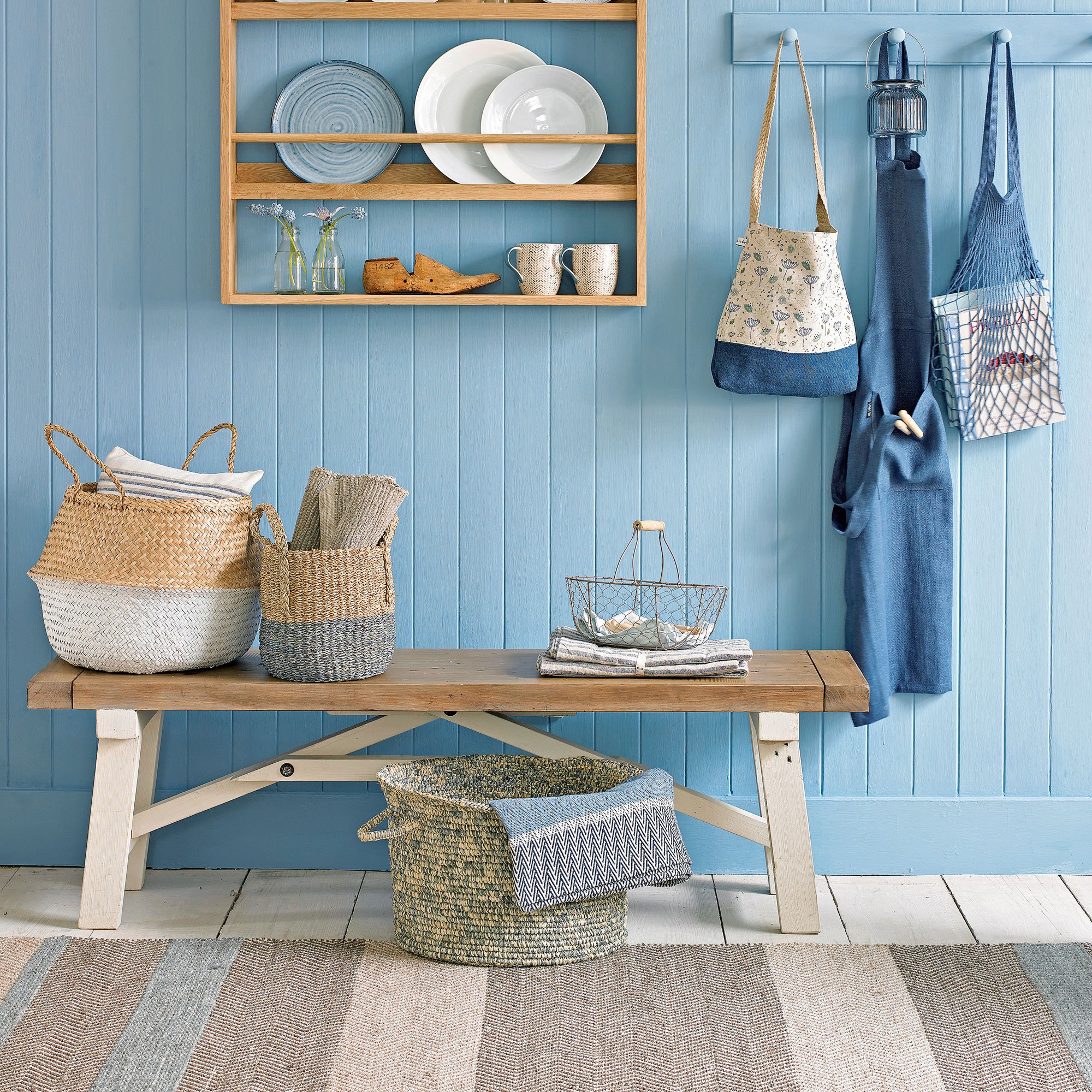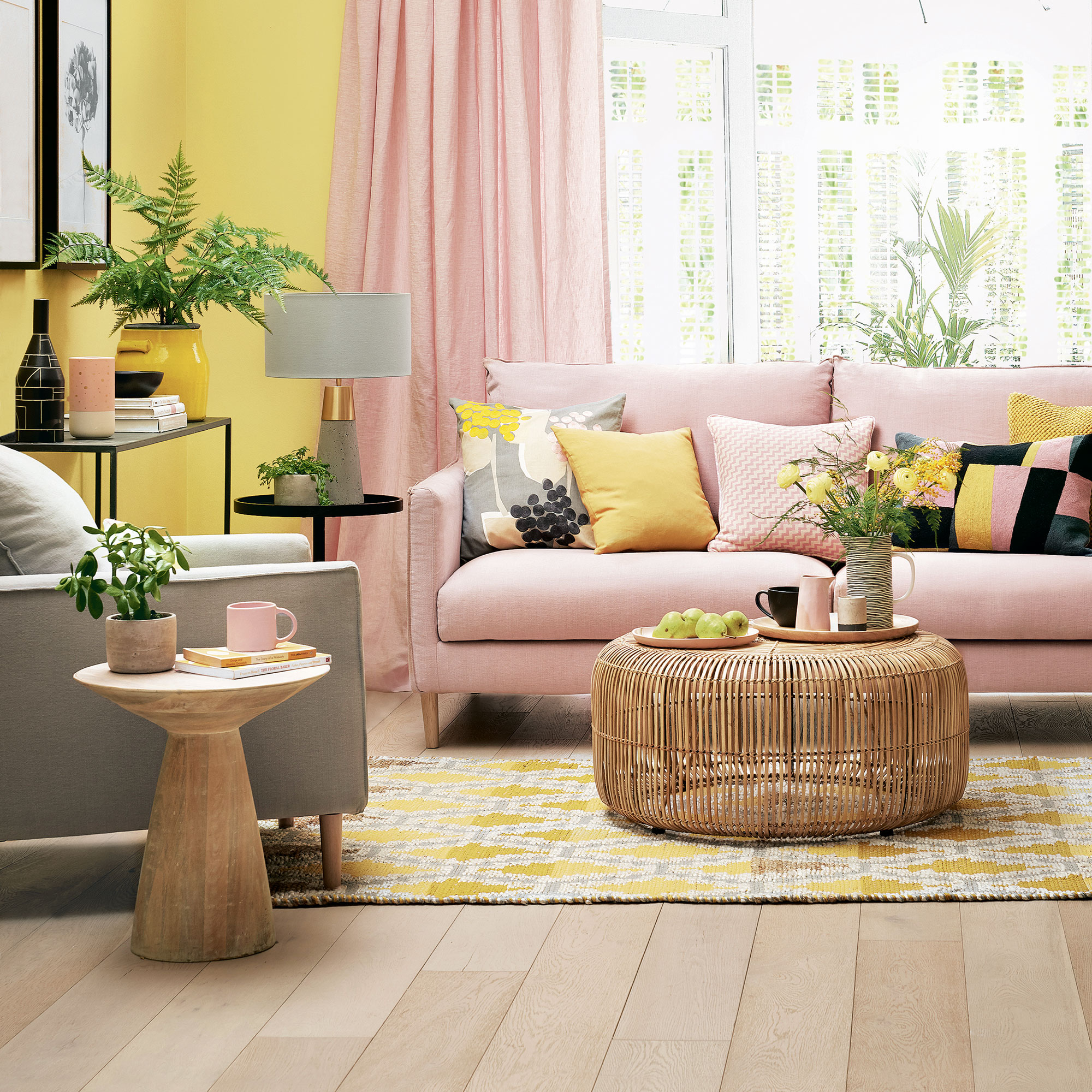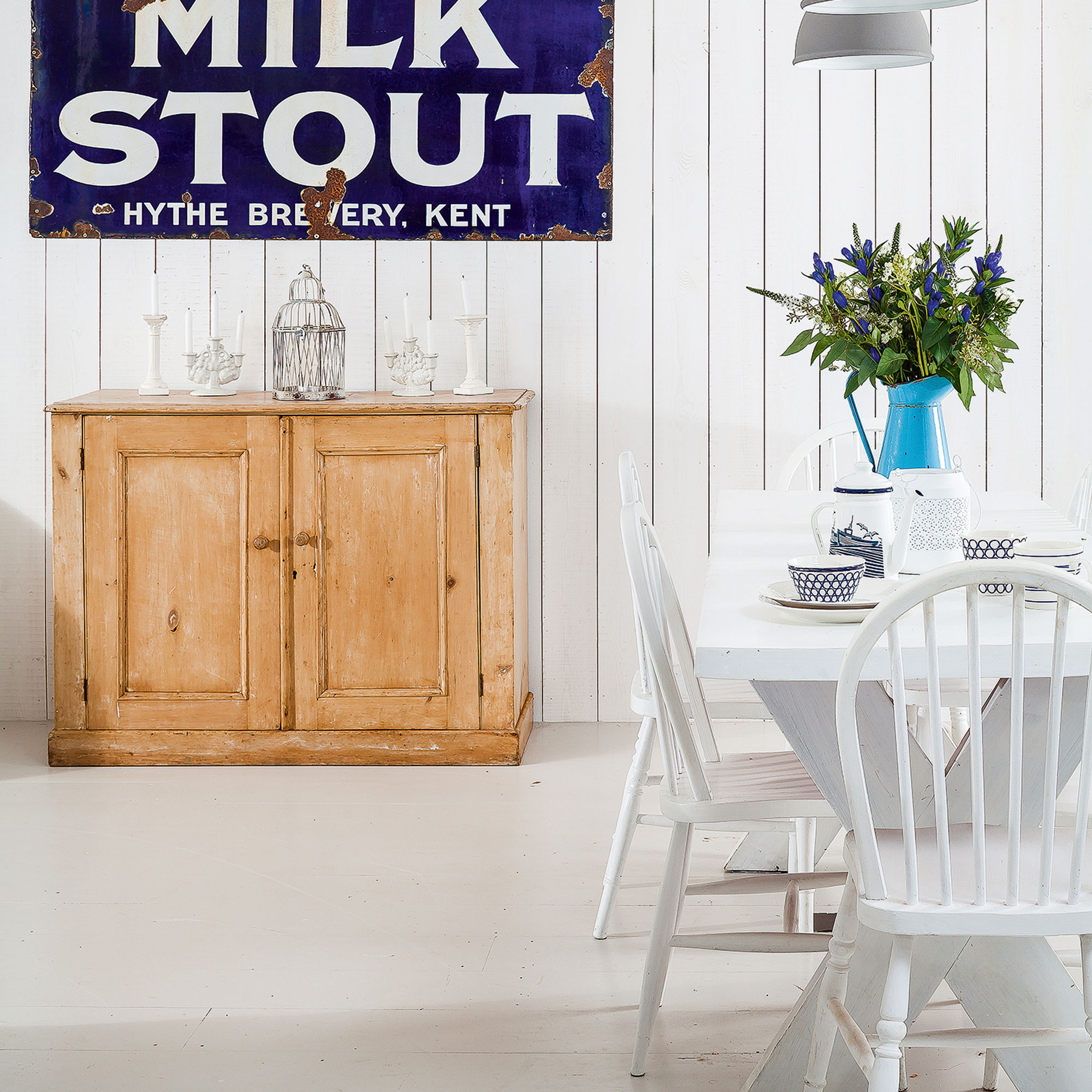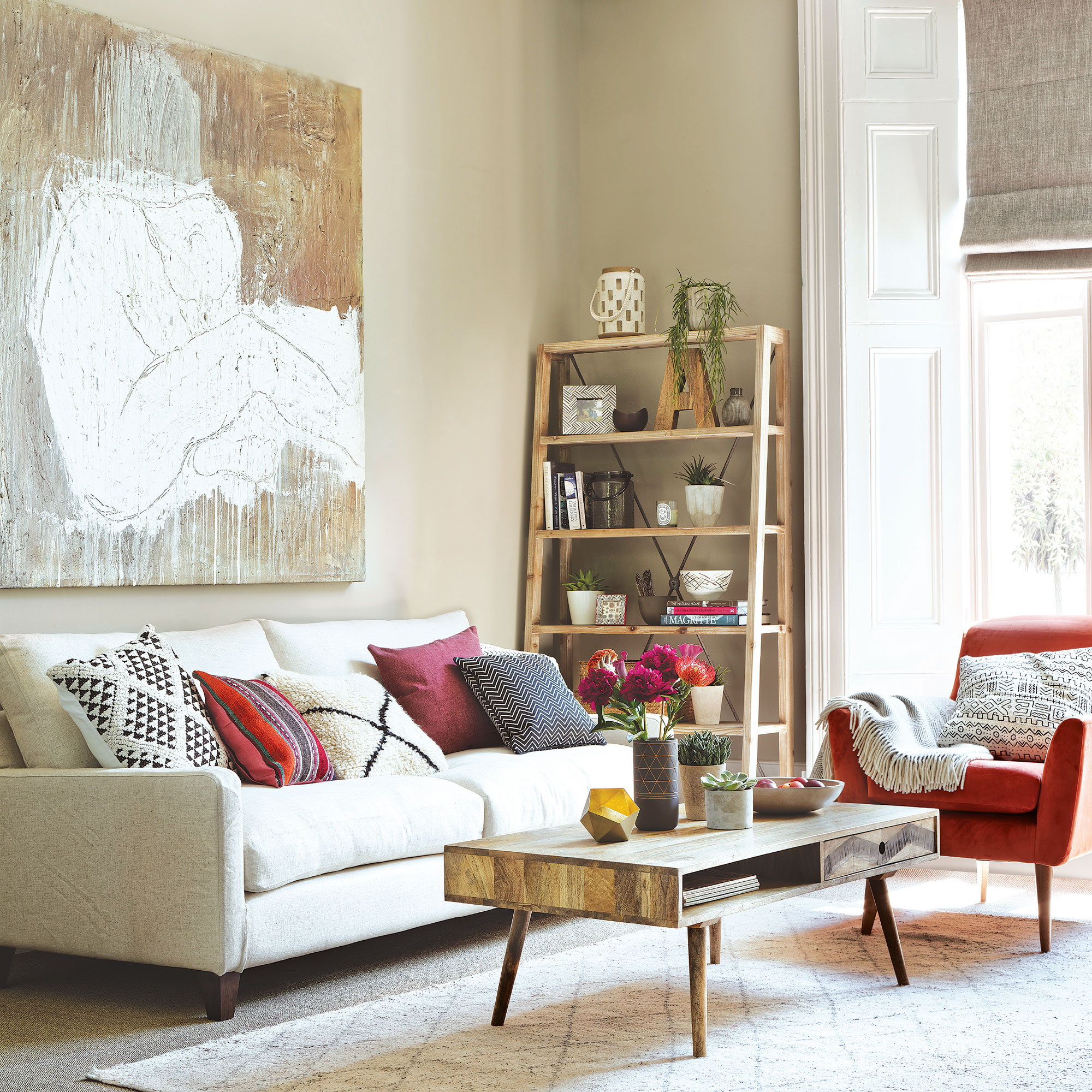The best floor insulation options for your home explained
Our guide to the different floor insulation types available, plus how much you can expect to pay for each

With household bills always on the rise, we're on the lookpout for ways to keep our homes as toasty as possible. This is why floor insulation is such a hot topic right now.
It's important to properly insulate a home, and flooring is one of the main areas where heat loss occurs. This is due to gaps in floorboards, skirting, and draughts around pipes.
‘Insulating and improving the airtightness of your floor can be a good first step on the road to a cosier home,’ says Chayley Collis at Green Building Store. ‘Ground floors can be incredibly cold, and are a major contribution to the discomfort of inhabitants.’
Insulating your home won’t just make it toasty and warm. It will also help reduce your property’s carbon emissions and lower utility bills. According to the Energy Saving Trust, installing floor insulation in a typical semi-detached house could save you around £50 per year on energy bills. This is as well as 175kg of carbon dioxide.
For thermal performance, you only need to insulate the ground floor of a home. If you live in a flat or upper floor of a maisonette, you usually don’t need to insulate your floor space. However, you should consider insulating any floors that are above unheated spaces, such as garages, as you could be losing a lot of heat through those.
Some people living in older flats or first-floor maisonettes can upgrade the acoustic performance of their floors by using floor insulation. ‘If you want to improve the acoustic performance of your internal floors, make sure the insulation you choose offers acoustic benefits,’ says Bradley Hirst, technical services manager at Knauf Insulation. ‘Mineral wool insulation works well to reduce noise transfer between living areas, bedrooms and bathrooms.’
What is floor insulation?

Floor insulation is a method of adding materials underneath floorboards if your home has suspended timber flooring. It can also be added on top of a solid floor, such as concrete. The process also involves blocking draughts by properly sealing gaps in flooring and skirting boards.
Get the Ideal Home Newsletter
Sign up to our newsletter for style and decor inspiration, house makeovers, project advice and more.
‘The insulation materials used will resist the transference of heat and reduce the amount of warmth lost in your home,’ says Thomas Goodman, property and construction expert at MyJobQuote.
According to the Energy Saving Trust, a typical installation could cost you between £520 and £1,300, depending on the circumstances. The initial price may seem steep seeing as the saving is only approximately £50 per year. But it should last the lifetime of your house with very little maintenance cost.
What are the best floor insulation options?

We take a look at what's available and pros and cons for each type.
1. Glass or rock mineral wool slabs
A semi-rigid material, glass mineral wool is made from recycled glass, sand, limestone and soda ash. While rock mineral wool is made from volcanic rock, basalt, dolomite and recycled slag from the steel industry.
- Best for Use in suspended timber flooring, as it is light, easy to cut to size. It's more forgiving when packing between unevenly spaced or warped joists.
- The benefits As well as having great thermal performance, it's non-combustible. So it will not add to the development or spread of fire should it occur. It’s also easy to cut, light to manoeuvre, and measurements do not need to be as exact as with rigid foam boards.
- The negatives A less rigid construction means more support is needed to keep this insulation in place. A net or battens crossing joists must first be installed. This makes it a more time-consuming installation compared with rigid boards.
- The cost An average 12 pack of mineral wool slabs will cost approximately £30 and cover around 9m².
2. Blanket floor insulation
Blanket floor insulation is a roll of unfaced mineral glass wool or fibreglass.
- Best for Fibreglass blankets are best used when packing between joists in suspended floors. It's not suitable for solid flooring as its non-uniform consistency will make your chosen floor covering lie unevenly.
- The benefits Easy to pack between joists with minimal measuring. Affordable, and little expertise needed to install.
- The negatives Cumbersome to move around and glass spores are easily dislodged from the roll itself. Suitable PPE clothing, available from Amazon, is required when working with it.
- The cost A roll will cost about £20 and will cover approximately 14m².
3. Rigid foam insulation

Foam boards are made from foam on the inside and then faced with plastic, aluminium, or plasterboard.
4. Foam spray insulation
- Best for Rigid foam insulation can be used for both suspended flooring and solid flooring. The thickness of the boards will vary greatly depending on which type of floor it is insulating. It's especially easy to lay on solid flooring.
- The benefits Easy to cut, shape, and move from one area to another.
- The negatives A less forgiving material than other less rigid forms of insulation. Accurate measuring and cutting is vital.
- The cost Approximately £10-15 per m², depending on the thickness of the insulation.
Foam spray insulation is a liquid foam that is sprayed in between the joists of a suspended timber floor. The foam expands and sets into a superior, insulating layer.
- Best for Awkward spaces or if you want to insulate your home without having to lift floorboards.
- The benefits Will completely seal between even the most uneven and warped joists without leaving any gaps. It also offers exceptional thermal resistance. There’s even a robotics company called Q-Bot that uses remote-controlled robots to spray insulation into the void under the floor causing minimal disruption.
- The negatives Can only be installed by skilled professionals.
- The cost An average floor will cost around £525. This will naturally vary depending on the size of the floor. Expect to pay more if you use Q-Bot.

5. Multifoil insulation
Multifoil is a type of insulation that’s made up of layers of foil as well as wadding.
- Best for Solid floor constructs, but can be used for suspended timber floors, too.
- The benefits Multifoil insulation has a long lifespan – typically 50 years. It's easy to handle, lightweight, flexible and contains no harmful fibres. This means it can be installed without any specialist tools or PPE. If you’re worried about head height being limited after insulation and floor covering is fitted, SuperFOIL sells a particularly thin multifoil called SFUF. Measuring just 6mm in thickness, it still delivers high thermal performance. Reflective foil prevents heat being lost.
- The negatives Typically costs more than other insulation materials.
- The cost Multifoil insulation starts at around £7.20 per m².
6. Draught-proofing
Draughts happen where there are gaps in the construction of your home, such as floorboards and skirting gaps.
- Best product to use? Flexible fillers, decorators caulk or mastic products can all tolerate movement. That makes them great for blocking cracks in flooring and skirting boards, which tend to contract, expand or move slightly with everyday use.
- The benefits Blocking unwanted gaps that let cold air in and hot air out of your home will save warm air. That means you’ll use less energy to heat your home, and save money on your energy bills. It will help create a warm, snug living environment, too.
- The negatives Take care in rooms that need good ventilation (such as bathrooms, kitchens and utility rooms), where a lot of moisture is produced.
- The cost Budget around around £200 to add professional draught-proofing to a typical semi-detached property, according to the Energy Saving Trust. DIY draught-proofing will be cheaper.
7. Rugs and carpets

A rug on the floor will help you feel warm underfoot and help block up some draughts. But it won’t reduce heat loss through flooring significantly. Carpets can provide a certain level of insulation. To prevent the optimum amount of heat loss you should still install insulation underneath carpets. This ensures your home is protected as much as possible.
- Best for Use in living rooms and bedrooms.
- The benefits Carpeted floors are good insulators, especially when paired with a thick, insulating layer of underlay underneath.
- The negatives Not practical for heavy-traffic spaces or areas prone to getting wet and dirty. These include entrance hallways, kitchens and bathrooms.
- The cost Carpets can cost anywhere between £5 and £30 per m². Carpet underlay costs an additional £3.50-£28 per m².
Is floor insulation on its own enough?
Insulating your floors is a good starting point for reducing your home’s carbon emissions, and lowering your utility bills. It will work better when used in tandem with other types of insulation, such as cavity wall insulation and roof and loft insulation.
‘This is known as top and tail insulation,’ says Thomas from MyJobQuote. ‘As a rule, the more insulation you have in your home, the warmer and more efficient it will be.’
What U-value for flooring is required?
How much insulation you need will depend on the current U-value of your floor set up. According to the Energy Saving Trust, if you live in England or Wales, the floor should achieve a U-value of 0.25 W/m²K. Less if possible, to meet Building Regulation standards. The U-value is a measure of how quickly heat will travel through the floor.
To achieve this standard, the Energy Saving Trust advises installing at least 70mm of high-performance foam insulation, or 150mm of mineral wool. This will vary depending on insulation material and brand chosen, as well as floor type, shape and size.

Sophie Vening is a freelance journalist and editor with more than 16 years’ experience writing about homes and properties. She’s worked for some of the UK’s leading interiors, self-build and property titles including, Grand Designs, Ideal Home, House Beautiful, Build It, The Metro Homes & Property and The Evening Standard Homes & Property.
She enjoys writing about complex issues in an easy-to-understand way.
-
 My go-to Ninja coffee machine is on sale for Easter weekend
My go-to Ninja coffee machine is on sale for Easter weekendIt makes coffee shop quality achievable at home
By Molly Cleary
-
 When to plant out annual flowering plants for vibrant, colourful garden borders – and give them the best start, according to experts
When to plant out annual flowering plants for vibrant, colourful garden borders – and give them the best start, according to expertsNot sure when to plant out annual flowering plants? We've got you covered...
By Kayleigh Dray
-
 I'm a kitchen decor editor and didn't like this tableware trend - until I saw H&M Home's designer-look plates
I'm a kitchen decor editor and didn't like this tableware trend - until I saw H&M Home's designer-look platesThey made it easy to justify a new crockery set
By Holly Cockburn